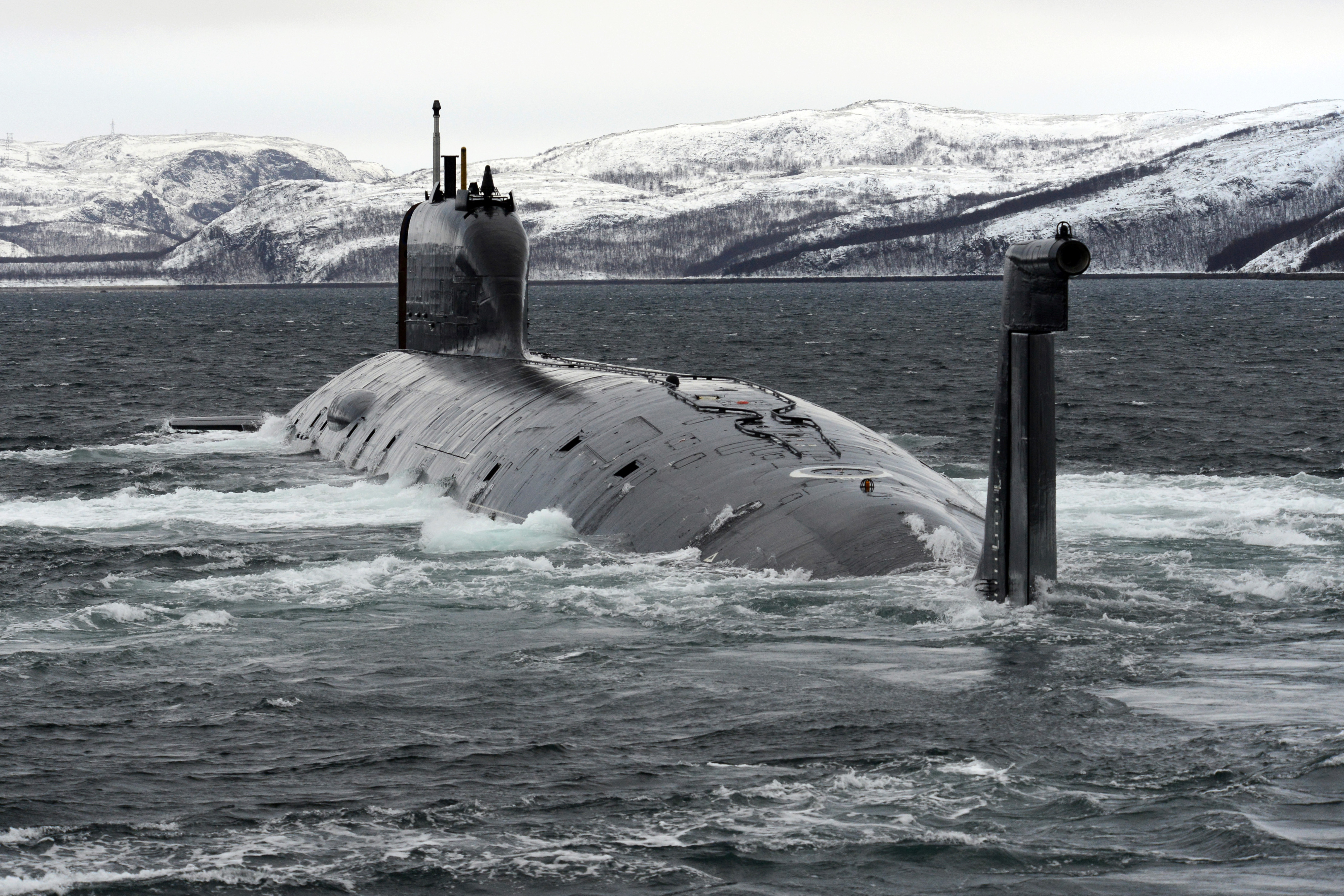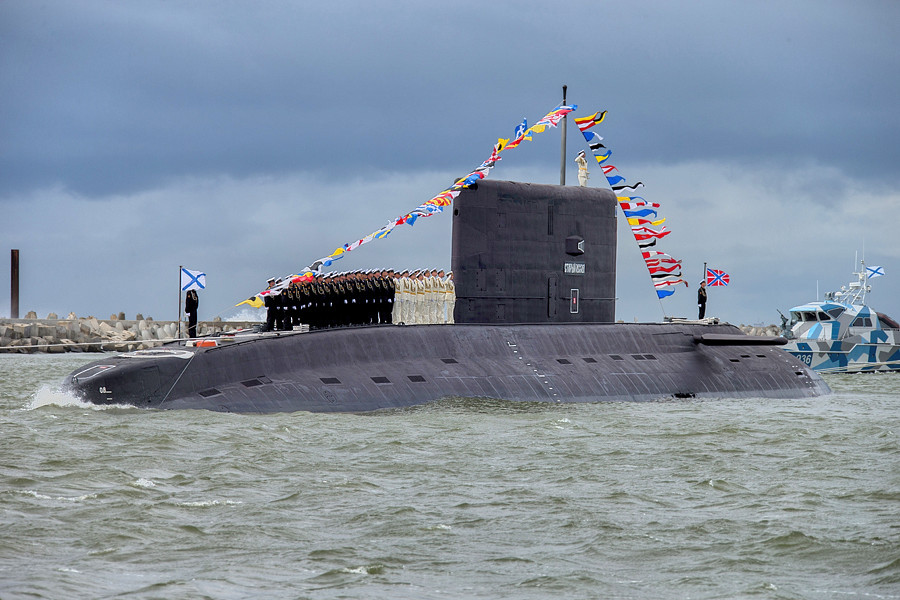Scorpenegate: How to secure India’s submarine fleet

Indian Navy's first Scorpene Submarine 'Kalvari' of Project 75.
EPAThe Scorpene submarine data leak represents the nightmare of India’s security dependency. Chanakya, the Indian master strategist, had written 23 centuries ago: “One whose wealth is in the possession of others cannot use the wealth when the need for it arises.” Replace the word wealth with security and you can sum up modern India’s plight. Having placed its security in the hands of foreign powers with its large-scale import of weapons, India is in the unenviable position of having its top military secrets being peddled on the international market.
How bad is the leak? The documents list out everything from the attack submarine’s diving depth, range and endurance, besides its magnetic, electromagnetic and infrared data. Plus the frequencies at which the submarines gather intelligence and the levels of noise the subs make at various speeds.
The Australian newspaper, which published the report about the leak, has redacted the frequencies but it’s more than likely that Pakistan and China have got an intelligence bonanza, and the documents are being closely studied in Islamabad and Beijing.
India’s Defence Minister Manohar Parrikar says the leak doesn’t compromise national security. But what else do you expect him to say?
Diversification gone wrong
The data leak shows that India's security is not guaranteed as long as it keeps importing weapons. But more importantly, it shows that western weapons are even more dangerous. India has embarked upon a major diversification programme to lessen the country’s dependency on a single – Russian – supplier.
In 2005, India contracted France’s DCNS to build six 1500-ton Scorpene attack submarines at Mazagaon Docks Ltd, Mumbai. But the project seems to be all over the place with a cavalier attitude in confidential matters. The large number of companies, contractors and subcontractors involved in the building of the vessel may have allowed whoever leaked the documents to access them in the first place. That more than 20,000 documents were stolen point to someone with top level access at DCNS.
A leak of such magnitude is a serious matter. For instance, the documents can tell India’s enemies how good their sonar needs to be in order to detect the Indian Navy’s Scorpenes. Stealth cover blown, game over.
Russian advantage is secrecy
The Scorpene leak shows that diversification isn’t what it’s cracked up to be. Having a large number of suppliers may give India a false sense of security – that it hasn’t placed all its eggs in one basket. But when something like ‘Scorpenegate’ happens, that security goes out the window.
In this backdrop, India needs to take a second look at its diversification policy. Having a wide range of weapons suppliers may not be so desirable when the result of such a policy is maddening confusion and logistics overload.
The Russian defence industry has been criticised for its supply chain bottlenecks. A number of Russian weapons in the Indian Air Force and Army are performing below capacity because of lack of spare parts. But in hindsight Russia’s opaqueness is good for secrecy. Most defence bureaus work away from the glare and are based in cities that are still difficult for foreigners to enter.
It is better to fight a war with a fleet of 150 (approximately 50 per cent capacity) Sukhois than field all 300 Sukhois whose radar frequencies are known to the enemy.
Stealth tech
The Scorpenes were selected for their stealth characteristics, plus they are also equipped with air independent propulsion – that allows a non-nuclear submarine to operate without access to atmospheric oxygen. This kind of maritime propulsion extends the submarine’s loiter time under sea.
Europe still has a lead over Russia in this technology, but with the Rubin research bureau developing AIP, the next generation of Russian subs will be equipped with it.
Even without AIP, Russian submarines have several advantages over their European rivals. Moscow is making a high-octane entry into the huge export market, with advanced diesel-electric submarines. As well as being silent, stealthy and armed with the world’s deadliest missiles, Russian submarines are often the vessel of choice for an increasing number of navies, especially in cash-rich Asia.
According to David Isenberg of Asia Times, “Russian submarines' unique capabilities and powerful armament are the two major attractions for foreign customers. In underwater duel modelling, Russian Kilo-class submarines invariably emerged the winner in virtual competition against German, French and Dutch submarines.”
Another reason is that the US, which rivals Russia in naval technology, does not make diesel submarines any more, leaving the waters open for Moscow’s undersea boats. Moscow’s aggressive defence export policy backed by liberal finance terms has ensured Russian-built submarines are prowling the world’s oceans.
For instance, the latest Novorossiysk submarine – also known as the Black Hole – is characterised by advanced stealth technology. Boasting cutting edge diesel-electric propulsion, this super silent submarine is virtually undetectable when submerged. Even the US Navy – which claims it tracks Russian subs 24/7 – cannot detect the Black Holes. These submarines can freely approach the coastlines of the United States without fear of being detected. Hence, the nickname.
In the nuclear powered class, Russia has the Akula, which it has leased to India. In 2012, an Akula class vessel armed with long-range land attack missiles sailed around the Gulf of Mexico for several weeks without being detected.
Russian subs are also known for their extended range, frequently sailing intercontinental distances from their bases in the Arctic. This capability is in stark contrast to that of the European submarines, which are designed to patrol shallow waters or at most the North Atlantic.
As well as range, attack submarines need teeth. Russian vessels are equipped with the world’s fastest and deadliest land attack cruise missiles and anti-ship weaponry. The Granit missile, for instance, can travel 625 km, which allows the sub to attack targets from well outside the range of its opponents. The Akulas are armed with the potent Klub anti-ship and land attack cruise missile having a stupendous 2500 km range. To be sure, these long-range missiles cannot be exported but even a stripped down MTCR-compliant version (under 300 km) will give these submarines a big edge.
After decades of boasting that American submarines were quieter, the US Navy is admitting it’s the Russians who now have the edge. Admiral Mark Ferguson, commander of US Naval Forces in Europe, told CNN that Russia is deploying new submarines that are harder for the US Navy to track and detect.
They are quieter, better armed and have a greater range of operation, noted Ferguson. "The submarines we're seeing are much more stealthy,” Admiral Ferguson said. “We're seeing (the Russians) have more advanced weapons systems, missile systems that can attack land at long ranges, and we also see their operating proficiency is getting better as they range farther from home waters."
Retired Admiral James Stavridis, a former NATO commander, added: "We cannot maintain 100 per cent awareness of Russian sub activity today."
Avoid getting depth-charged
India is investing $3.5 billion in the Scorpene and five more submarines are to follow. It remains to be seen what changes India can get the French to make in the subs to minimise the impact of the loss of secrecy. However, it is certain that structural changes are next to impossible. Already France has tried to blame India for the data leak, despite all signs pointing to a leak from the French side. If India’s experience with the Rafale fighter deal is any indication, the French are going to be extremely stubborn in accommodating India’s concerns.
If the Scorpene’s stealth aspects have been compromised, the navy should simply cancel the deal even if it means a stiff penalty. India cannot afford to send hundreds of men into the dark depths of the ocean in an undersea vessel that can be easily detected and destroyed.
India should therefore stick with Russia, which is no chump when it comes to submarine technology.
All rights reserved by Rossiyskaya Gazeta.
Subscribe
to our newsletter!
Get the week's best stories straight to your inbox


